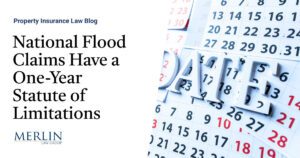Your Simple Guide to Self-Employed National Insurance

If you’re self-employed, it’s up to you to pay the tax and National Insurance on your income every year. But what is self-employed National Insurance? How does it work? And how much do you need to pay?
We have the answers to those questions (and more) below.
What is National Insurance?
National Insurance is a tax on earnings paid by workers in the UK. Everyone aged between 16 and the state pension age (currently 67) needs to make regular National Insurance contributions (NICs) over their working lives.
This money goes towards your state pension, benefits, and other allowances. The amount you have to pay (and when you pay it) depends on your earnings and employment type.
There are also some exceptions where you may not need to pay as much, or even at all. We’ll dig into those later.
If you work as an employee and earn more than £242 a week, your NICs will be deducted from your wages before you’re paid via PAYE (pay as you earn). These are called Class 1 National Insurance contributions.
But if you work for yourself, you’ll have a different class of NICs to pay.
How does National Insurance work if you’re self-employed?
When you’re your own boss, you may pay one (or both) of two types of self-employed National Insurance:
Class 2 NICs — you have to pay these if your profits are more than £11,908 a year. You can choose to pay them voluntarily if your profits are below £6,725 a yearClass 4 NICs — these have to be paid if your profits are more than £11,908 a year
How much do you pay for National Insurance when self-employed?
Before the 2022-23 tax year, you only had to pay Class 2 NICs if your profits were above the “Small Profits Threshold”. In 2021-22, that threshold was £6,515. Class 4 NICs only had to be paid if your profits exceeded the “Lower Profits Limit”. That was £9,568 in 2021-22.
But when the Spring Statement was announced in March 2022, it was all change, with thresholds increasing part of the way through the year.
Here’s how it breaks down now:
For 2022-23, you need to pay Class 2 and Class 4 NICs if your profits are above the Lower Profits Limit (LPL), which is £11,908. This number is the average LPL across the whole year. It’s calculated from the 13 weeks where it was £9,880 (from 6 April to 5 July) and the 39 weeks where it was £12,570 (the new LPL threshold, in place from 6 July). This brings self-employed people in line with employees.However, if your profits are between the Small Profits Threshold (£6,725 in 2022-23) and the Lower Profits Limit, you won’t have any Class 2 NICs to pay. Instead, you’ll be treated as having made Class 2 contributions. That means you’ll have access to the same contributory benefits as if you had paid Class 2 NICs all along. And if your profits are below the Small Profits Threshold, you can choose to make voluntary Class 2 contributions.
Note: From April 2023 onwards, self-employed people will be able to earn £12,570 before paying any NICs (Class 2 or 4). This brings it in line with your income tax personal allowance.
So, how much is Class 2 National Insurance for 2022-23?
If your self-employed earnings exceed £11,908 in the 2022-23 tax year, you’ll need to pay Class 2 NICs of £3.15 a week (£163.80 a year).
This is up from £3.05 a week in 2021-22.
What about Class 4 National Insurance for 2022-23?
The Class 4 NIC rates for 2022-23 are:
9.73% on profits over £11,908 and up to £50,2702.73% on profits over £50,270
For example, let’s say you earned profits of £25,000 during the 2022-23 tax year. Your Class 4 NIC liability would be as follows:
First £11,908£0.00Next £13,092 @ 9.73%£1273.85Total Due£1273.85
Now, let’s say you’ve made £57,000 in profit during the 2022-23 tax year. This would result in a Class 4 NIC bill of:
First £11,908£0.00Next £38,362 @ 9.73%£3,732.62Final £6,730 @ 2.73%£183.73Total Due£3916.35
Is National Insurance lower for self-employed people?
Historically, self-employed people earning the same amount as someone in employment would pay less National Insurance. However, the increased Class 4 NIC threshold will likely change this, bringing self-employed and employed NICs more closely in line.
How do you register for Class 2 and 4 self-employed National Insurance?
When you register as self-employed with HMRC, the registration will cover self-employed income tax and Class 2 and 4 National Insurance.
You must let HMRC know if you’re self-employed. If you don’t, any Class 2 NICs you attempt to make could be rejected or may not be recorded. This could affect your entitlement to benefits further down the road.
Read our guide, How to Register as Self-Employed in the UK, to learn more about the process.
How do you pay National Insurance on self-employed income?
You’ll generally pay your NICs on an annual basis through Self Assessment. Remember, your NICs are paid on your profits, not your overall earnings. Work out your profits by subtracting your expenses from your self-employed income.
Once you’ve completed your Self Assessment tax return, you’ll be given a bill and a deadline to pay it. The bill will include your income tax, NICs, and possibly a “payment on account” – a portion of your next tax bill to be paid in advance.
The deadline for completing Self Assessment tax returns online and paying your bill is 31 January.
Depending on your situation, you may be able to pay your NICs monthly. You’ll need to contact HMRC to arrange that.
Who doesn’t need to pay self-employed National Insurance?
Some self-employed professionals don’t need to pay National Insurance through their yearly Self Assessment. These include:
Examiners, moderators, invigilators and people who set exam questionsPeople who run businesses involving land or propertyMinisters of religion who do not receive a salary or stipendPeople who make investments for themselves or others — but not as a business and without getting a fee or commission
If your job is on that list, you may still want to make voluntary contributions. Here’s why.
Why make voluntary Class 2 NICs?
If you’ve gone several months (or years) without making any Class 2 National Insurance contributions, you have the option of volunteering payment.
The main reason for doing this is to protect your future eligibility for certain state benefits. Some benefits require you to have paid a certain amount of Class 2 NICs within a particular period of time. For example, entitlement to maternity allowance is based on NICs being paid in the 66 weeks before the baby is due.
Similarly, entitlement to the state pension scheme depends on you having paid (or been credited with) enough NICs throughout your working life. Currently, 35 qualifying years are required to access the maximum pension.
Quickfire summary
To recap, do you pay National Insurance on self-employed income? In most cases, yes, you do.
When you’re self-employed, it’s your responsibility to pay your income tax and National Insurance contributions (NICs) every year, usually via Self Assessment. Your NICs are calculated based on the amount of profit you’ve earned during the tax year.
Currently, you only need to make Class 2 and 4 NICs once you’ve earned over £11,908 in profit. From 2023-24 onwards, this will increase to £12,570.
Stay up-to-date with self-employed National Insurance rates on the gov.uk website.
Also read:






